Savage Model 110 Classic
Adjustability and Accuracy Combined
feature By: John Haviland | May, 20
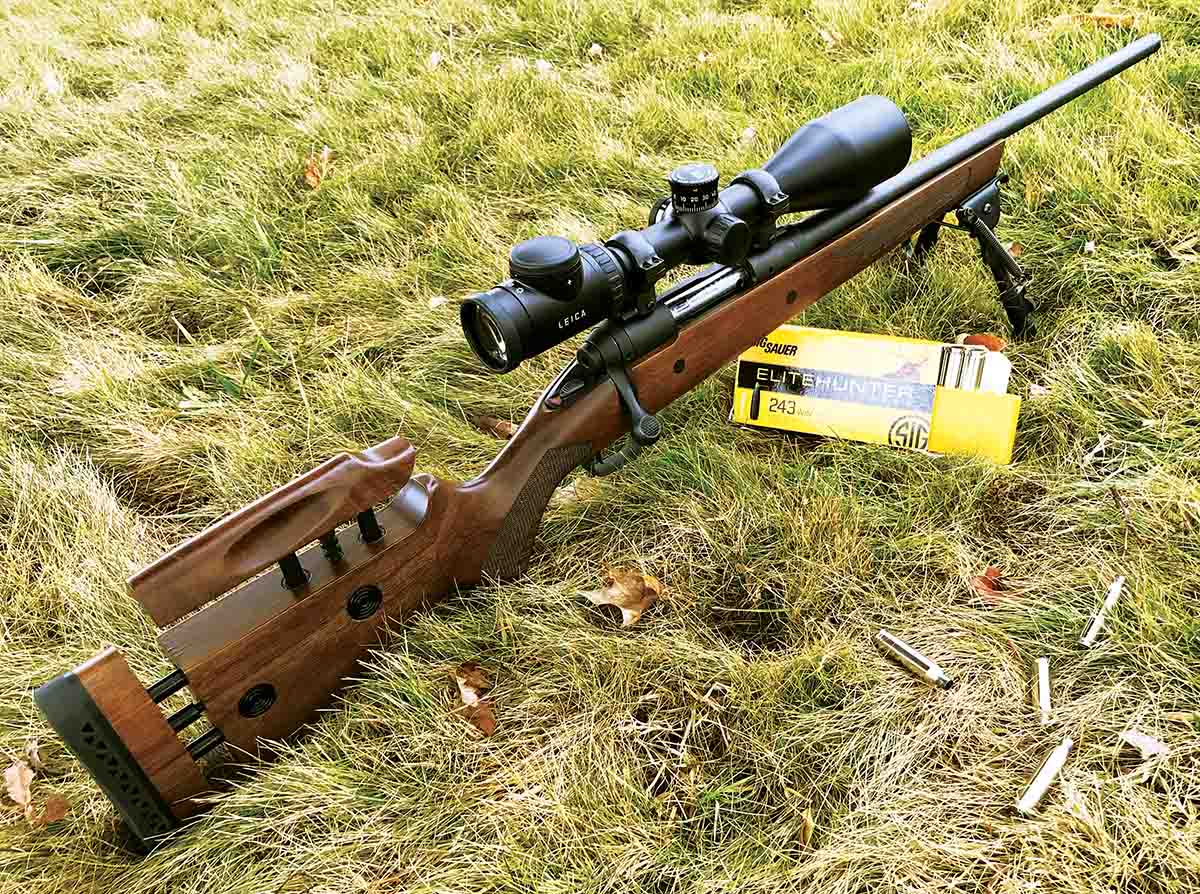
Through the good and bad times of the last 62 years, the foundation of Savage Arms has depended on its Model 110 bolt action. The rifle was first offered in 1958 chambered in .30-06 and .270 Winchester, and the following year in a short action chambered in the .243 and .308 Winchesters. Over the years, the Model 110 has expanded to include, among others, Hunter, Tactical, Target, Long Range, Trophy and Varmint models chambered in a wide variety of cartridges. A check of the Savage catalog shows the vast majority of those rifles feature a synthetic stock.
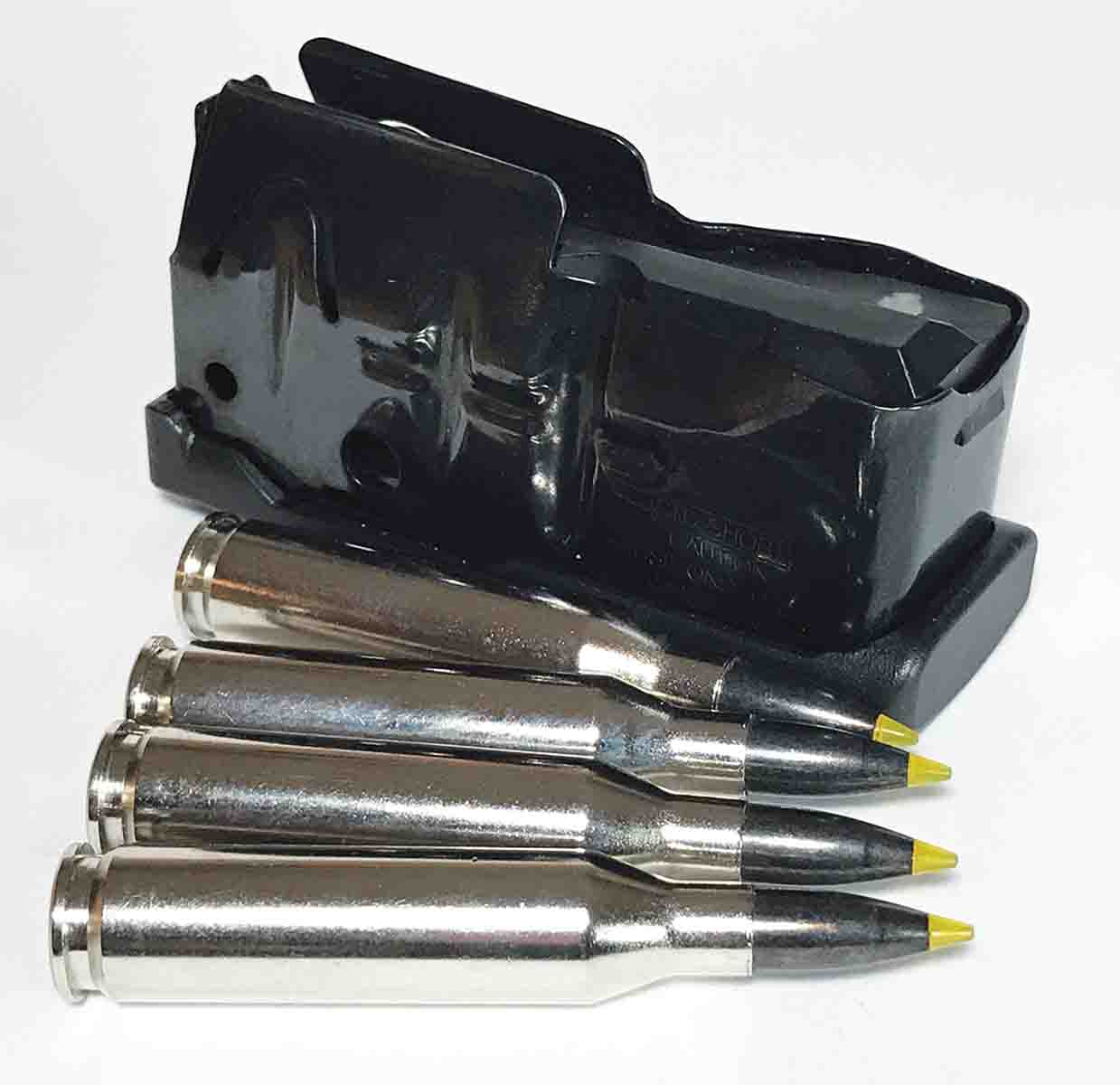
The new 110 Classic is for shooters who prefer a traditional rifle made with a walnut stock and steel. The Classic’s stock is eye-catching with its satin finish, checkering panels on both sides of the forearm and grip, tight wood-to-metal fit around the receiver, steel magazine/trigger guard frame and a straight comb. With a push of a button, the Classic’s stock is adjustable for length of pull and comb height.
The Classic I’ve shot over the last couple of months was chambered in .243 Winchester. The rifle accurately shot a variety of factory and handloaded cartridges. No matter if its barrel was clean, dirty or hot or cold, the rifle typically placed three bullets well inside an inch at 100 yards. In fact, the rifle shot so well, I’d still like it if it only had the appeal of a weathered fence post.
The first time shooting the rifle required firing a couple of shots at 25 yards to align its Leica scope, and a couple more shots to fine-tune elevation and windage adjustments at 100 yards. The first three 65-grain BXV bullets from Browning Predator & Varmint .243 factory loads practically formed one hole at 100 yards. I shot a mix of 30-some other cartridges to further acquaint myself with the rifle. To see if the Leica scope had retained its setting, I fired two more bullets from the Browning cartridges at the same target as the first three bullets. The five-shot group measured .57 inch. Additional shooting showed the rifle shot other loads just as well.
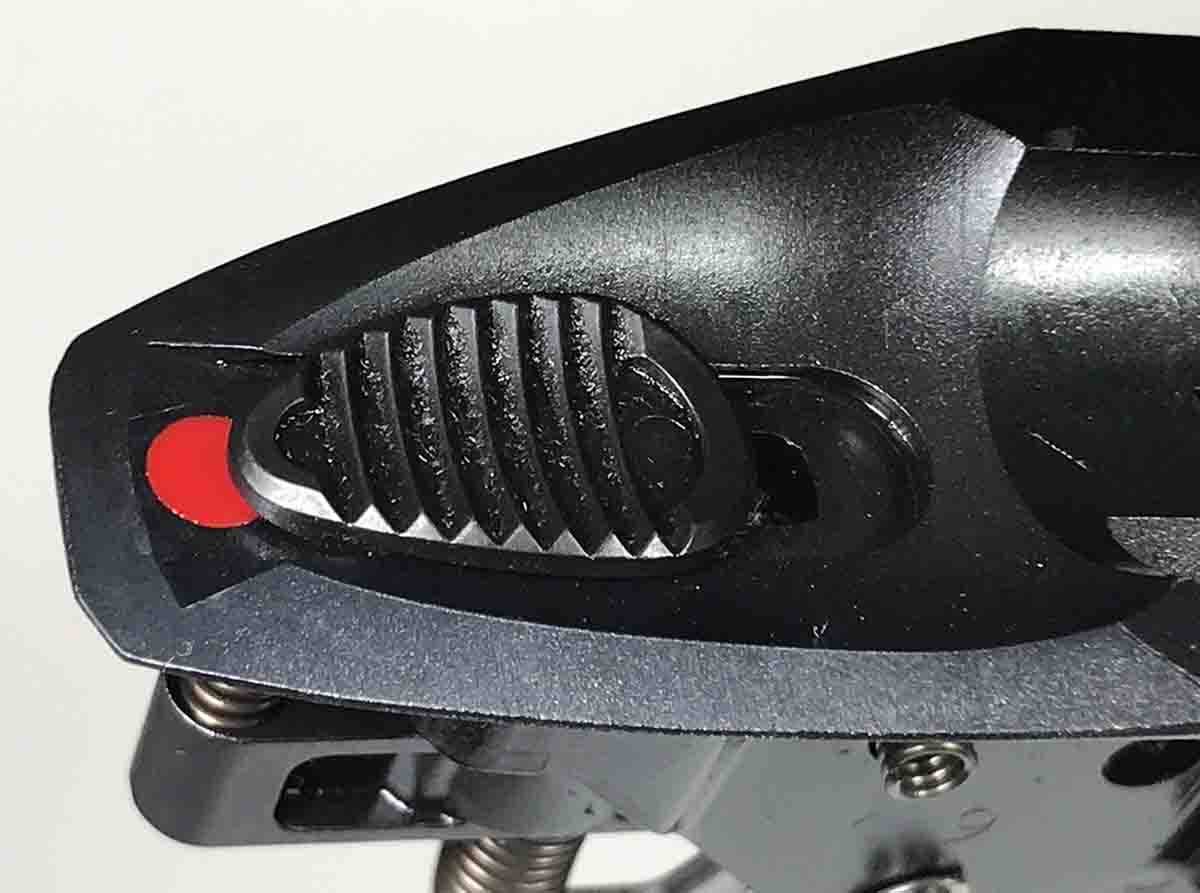
Several features of the rifle helped it shoot so accurately; its heavy barrel, light trigger pull and stock bedding. Surely the Classic’s weight helps steady it while shooting from the support of a bench. The Classic weighed just over 8 pounds as it came from the factory box. Weight increased to 10 pounds, 4 ounces with the addition of a Leica 4-16x 56mm Magnus scope in steel Burris Signature Zee rings clamped to Tasco aluminum bases.
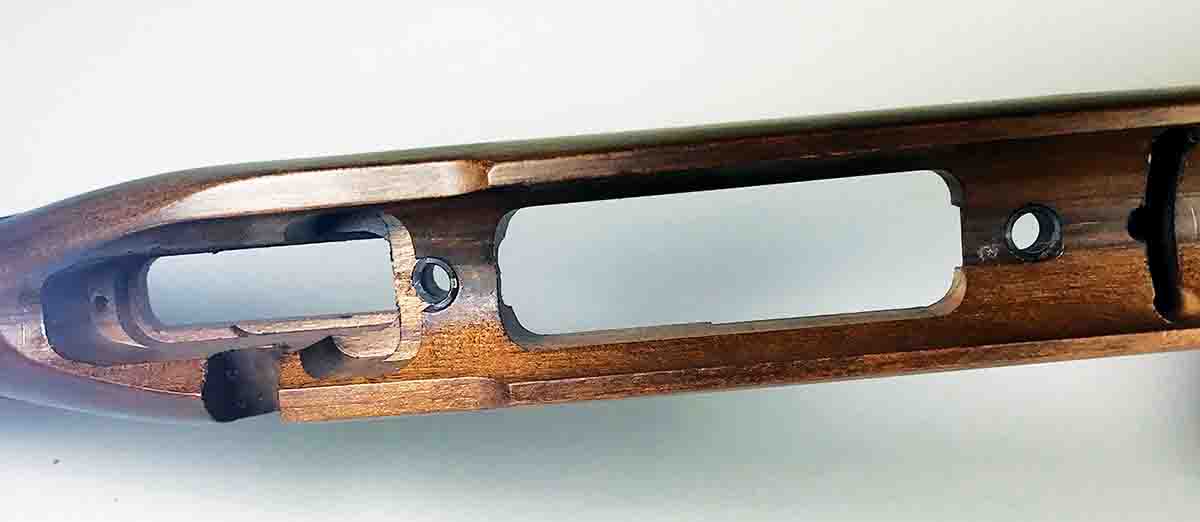
The Classic’s 22-inch barrel is rather thick, tapering little from in front of the receiver to .75 inch at the muzzle. The barrel is free-floated with a sizable gap between it and the stock’s barrel channel.
A Lyman Digital Borescope revealed crosswise tooling on the top of the rifling lands and grooves the length of the bore. Copper fouling, built up by firing 40-some shots, smeared the edges and tops of the lands. Everything written about rifle accuracy states that such a barrel could never shoot accurately, but this one does.
Accuracy might be helped by the heat treatment Savage barrels receive to relieve metal stress and keep them straight when they heat up from uninterrupted shooting. The large barrel nut that locks the barrel to the receiver also provides extra stiffness to the barreled action.
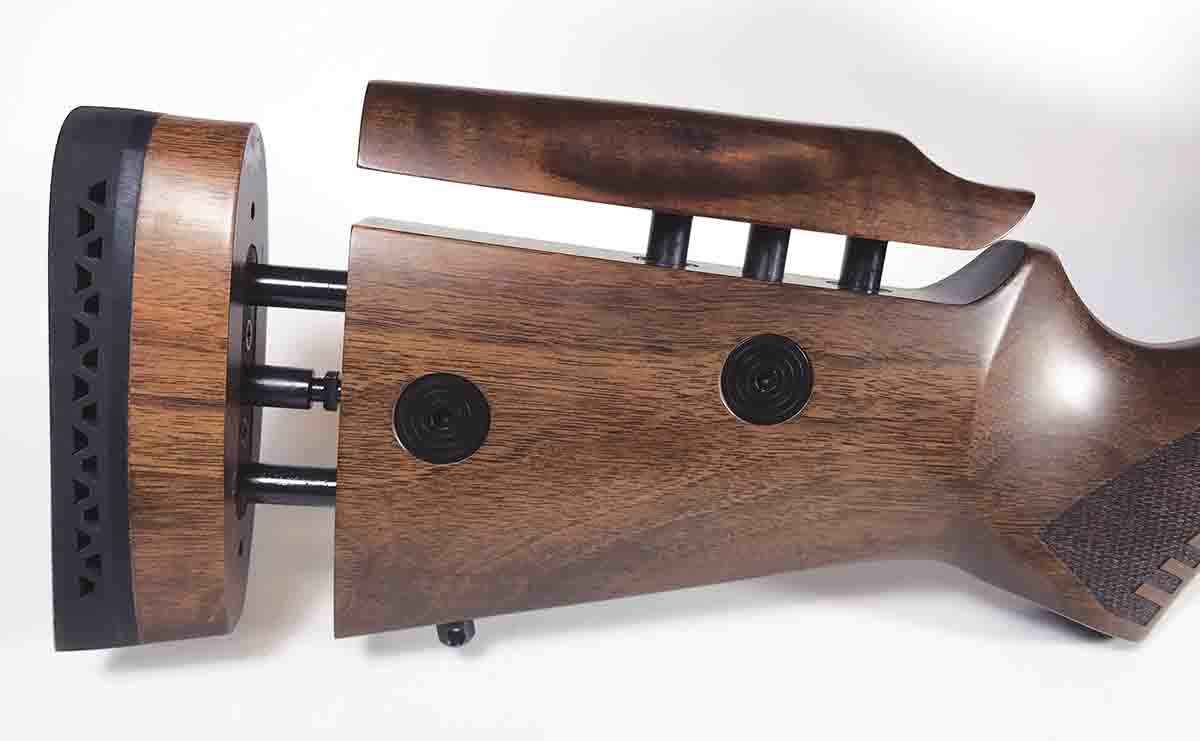
Certainly the Savage AccuTrigger helped the Classic shoot precisely. Release weight of the AccuTrigger is easily adjustable for a pull weight of between 1.5 and 6 pounds with a supplied tool that rotates the return spring at the back of the trigger assembly. The AccuTrigger on the Classic was set at 1.5 pounds as the rifle came from its factory box. It had no creep or overtravel. Tested five times with a trigger pull gauge, release weight never varied so much as an ounce. That light trigger pull was fine while shooting the rifle supported on a bench in warm weather, when you can feel the AccuRelease blade in the center of the trigger lift the sear block and last pound of pull release the trigger sear. It was too light, though, for cold weather of coyote hunting. So I increased the trigger pull to 3 pounds before heading into the foothills after coyotes.
Just as important as a good trigger, a proper-fitting stock links a rifle to the shooter. The Classic accomplishes that fit with its adjustable comb and length of pull. Pushing buttons on the right side of the buttstock is all that’s required to make alterations. A push on the forward button springs the comb up one position from its lowest setting. Raising the comb higher requires pushing the button and pulling up the comb until it clicks into place and is held by three steel rods. Comb height is adjustable in .25-inch increments. With the comb set in its lowest position, near as I could gauge the nose of the comb is level with the center of the rifle’s bore. Raised all the way up, the nose of the comb is 1.5 inches above the center line of the bore. The Leica 4-16x 56mm Magnus scope sits up like a sail on a ship on the Savage rifle, and the comb in its third elevated position aligned my eye behind the scope with my cheek in firm contact on the comb.
.jpg)
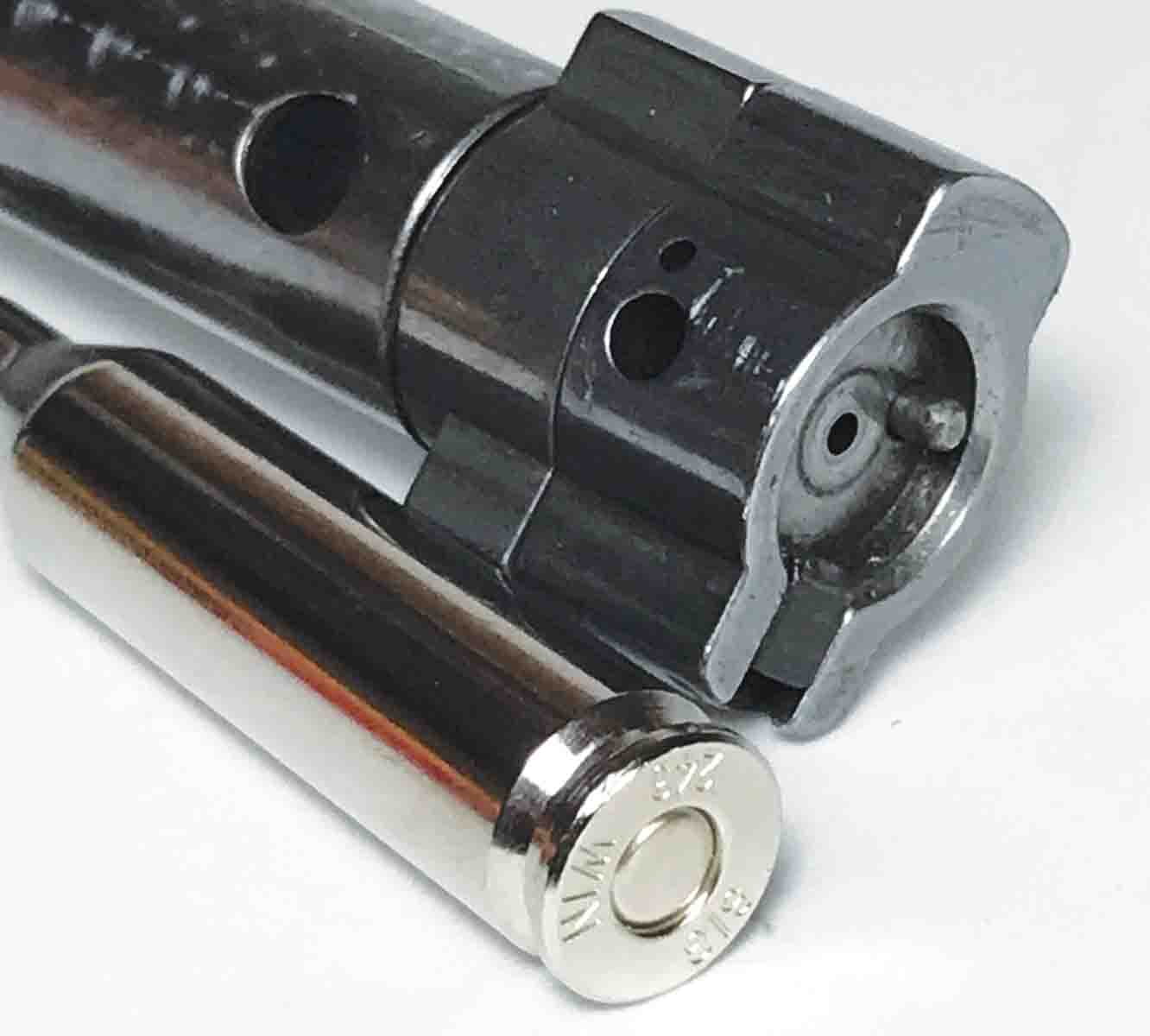
The buttstock is capped with a .75-inch thick rubber recoil pad attached to a short length of the wood buttstock. Length of pull is 13 inches with the pad all the way forward. A push on the rear button on the side of the buttstock springs the pad out one position to a length of pull of 13.25 inches. Pushing the button and pulling on the pad lengthens pull in five .25-inch increments out to 14.5 inches. A 13.25-inch length of pull felt right while shooting seated at a bench and standing. The same Allen wrench used for the action screws fit the buttons to loosen or tighten them.
The Classic’s stock is pleasing to the eye. The tip of its 10-inch long forearm angles rearward, and lines from the bottom of the grip flow into the buttstock. The dished-out nose of the comb allows removing the bolt with the comb in the lower positions, and long ovals (finger grooves) for raising the comb decorate each side. An even satin finish on the stock gives way to panels of cut checkering on both sides of the forearm and grip. Five bars cut on the rear bottom of the panels liven its appearance.
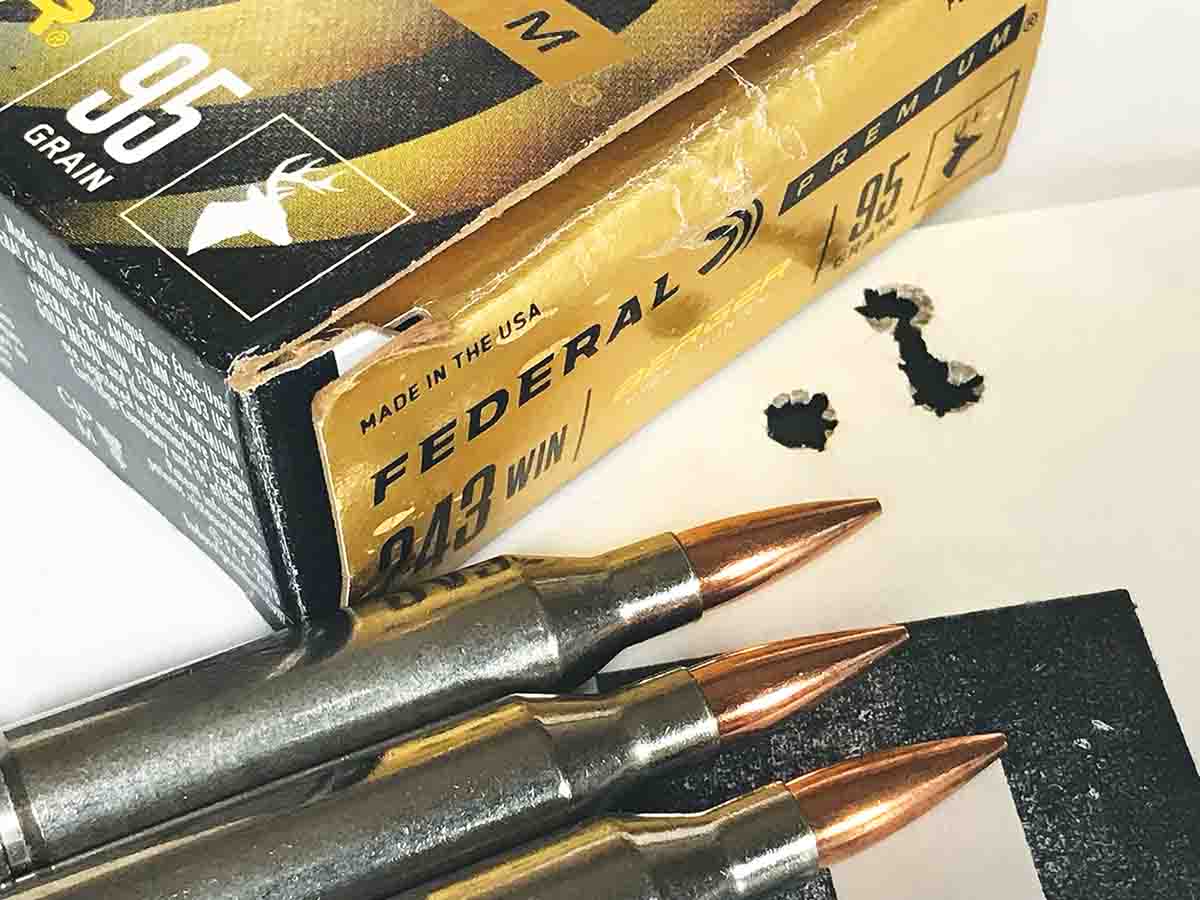
Wood-to-metal fit is fairly tight around the receiver and magazine/trigger guard frame. Beveled stock edges around the magazine/trigger guard frame help prevent nicking the wood when fumbling to insert the magazine. Slight gaps between the buttstock and comb and butt do not lessen its looks. The comb appears to be cut from the same piece of walnut as the buttstock. The piece of wood attached to the recoil pad was lighter in color than the buttstock, but its grain closely matched the buttstock.
The Classic’s steel detachable magazine holds four .243 Winchester cartridges in a straight stack. Its steel release lever locks the front of the magazine, and it is not going to wear out like aluminum or plastic that eventually allow a magazine to rattle and then fall out. Loading the magazine is easiest when it’s out of the rifle. With it in the rifle, though, it can be loaded by inserting cartridges in the ejection port and snapping them into the magazine lips. A few times while closing the bolt, a cartridge pushed out of the magazine and popped up enough for its head to jump over the top of the bolt. That mostly happened with a full magazine. Keeping the head of cartridge all the way to the rear of the magazine cured the problem.
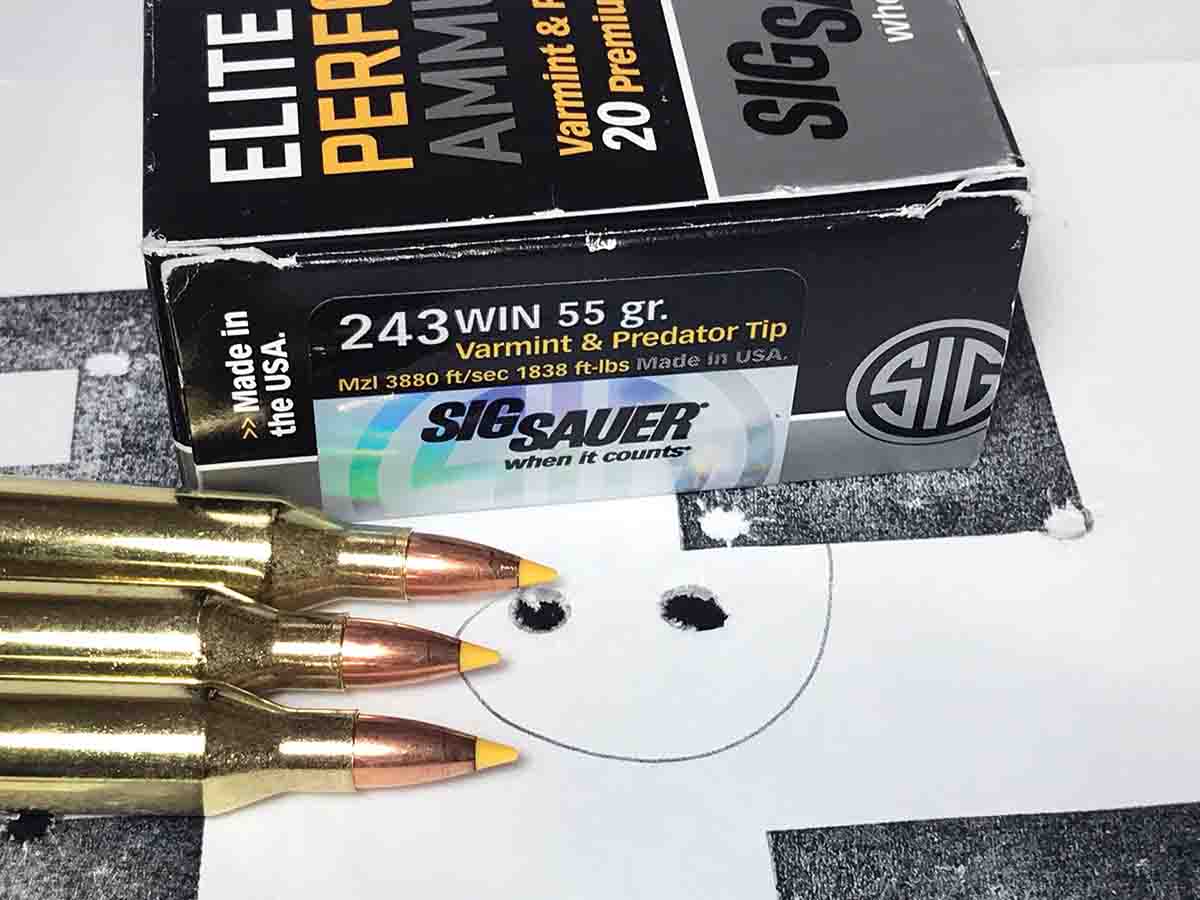
I shot eight different .243 Winchester factory loads through the Classic during four sessions. SIG Sauer Elite Performance and Federal Premium Vital•Shok cartridges loaded with copper bullets were the only two that averaged over an inch for two, three-shot groups. Accuracy failed to improve when shooting both loads a second time.
Six other factory loads more than compensated for the copper bullets’ lackluster accuracy. SIG Sauer Elite Hunter 90-grain Controlled Expansion Tip loads averaged .9 inch for two, three-shot groups, and Federal Premium with a 95-grain Berger Hunter Hybrid averaged .76 inch. The more I shot the rifle, the better its accuracy became. Sierra GameChanger 90-grain Tipped GameKing loads averaged .76 inch and Hornady Precision Hunter 90-grain ELD-X loads averaged .55 inch.
With some apprehension my handloaded .243 cartridges would fail to measure up, I shot three different powders each handloaded with Hornady 75-grain V-MAX and Nosler 80-grain Ballistic Tip bullets. The three V-MAX loads and one Ballistic Tip load fairly-well matched factory loads.
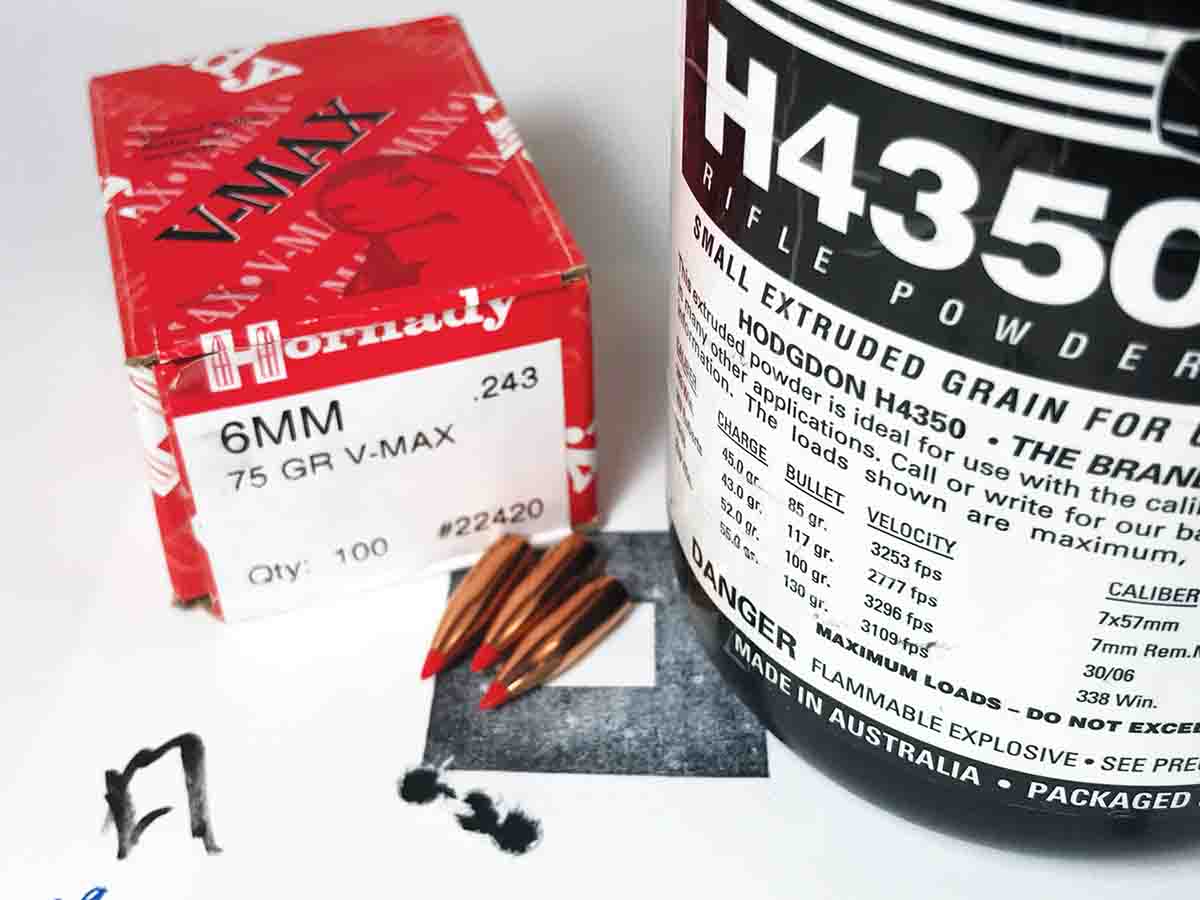
In preparation for a coyote hunt the coming weekend, I sighted in the Leica scope so the Classic shot SIG Sauer Elite Performance 55-grain Varmint & Predator Tip bullets 2 inches above aim at 100 yards. With that sight setting, a ballistic calculator stated the bullets should drop 1.2 inches at 300 yards. A 0.1-MIL click up on the Leica’s elevation turret resulted in bullets hitting an inch above aim at 300 yards. I turned the turret back down and did my best to remain steady on the trigger with the Savage supported on a bench. Three of the SIG Varmint & Predator Tip bullets hit right on aim in a 2.23-inch group at 300 yards.
I clamped a Harris bipod on the Classic’s forearm to shoot prone and the rifle was steady with the toe of the stock supported on a sandbag. The stock fit better from prone with the comb one setting higher and length of pull one position longer. A strong headwind shifted back and forth from the right and left. Ignoring the wind, the first three bullets landed in a tight group later measured at 2.14 inches. The next three bullets formed a wide 3.98-inch group, which wiped the smug look off my face.
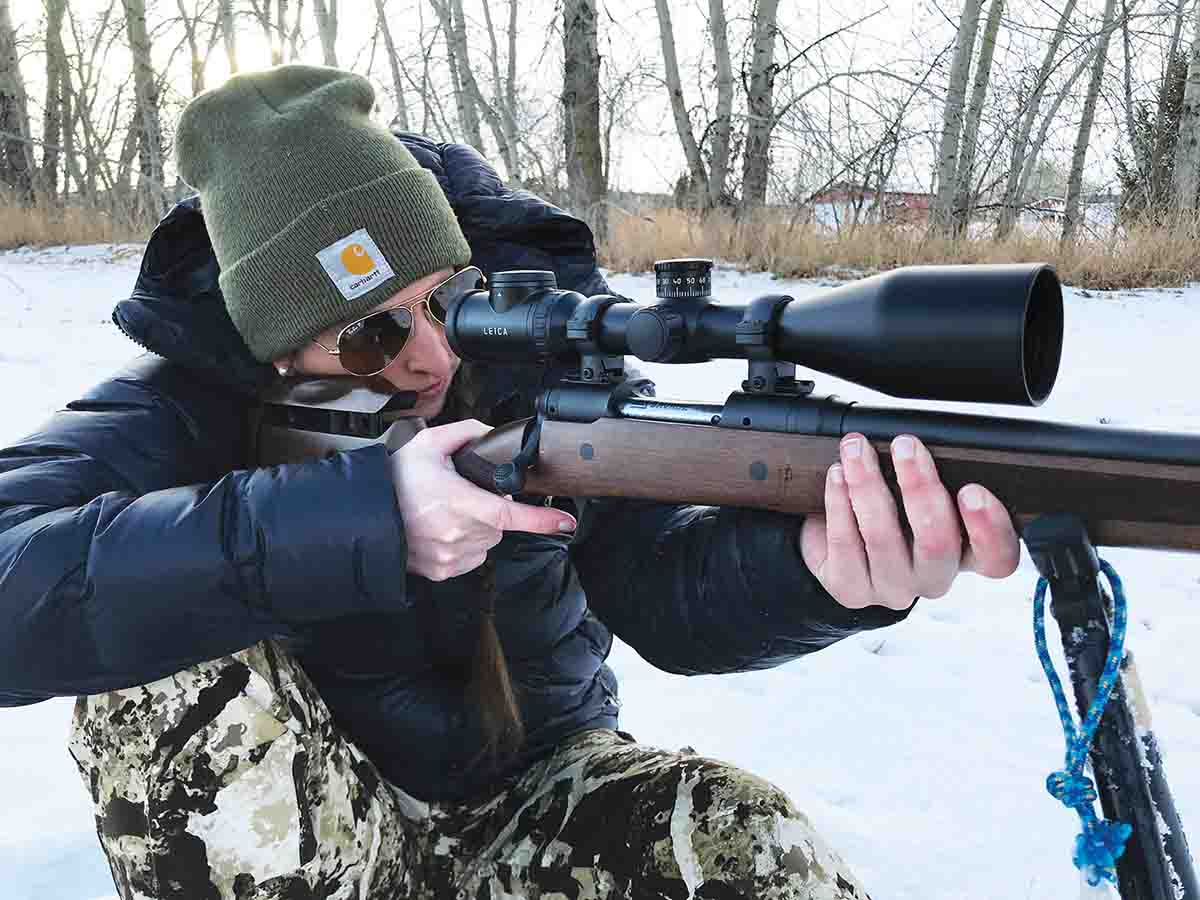
The New Year dawned cold with a slight breeze. Walking across the foothills was mostly level with only a few inches of crusted snow, and the rifle’s weight on my shoulder felt light with the anticipation of the hunt. An hour into the walk I peeked over the crest of a sagebrush ridge. Two coyotes stared at me from the middle of an open flat. I ducked down and ranged them at 397 yards. Sagebrush ruled out shooting prone, and the crosshairs would not stay settled with the rifle supported on shooting sticks.
The coyotes were only slightly alarmed. When they wandered into a quaking aspen creek bottom, I hurried up the ridge and sat against a tall sage. After 20 minutes I tried my best rendition of a dying jackrabbit. The coyotes stood on a ridge across the creek and howled and yipped – they were not fooled. We exchanged derogatory howls for 10 minutes. My last howl must have offended them, and they trotted off through the sagebrush.
In addition to the .243 Winchester, the short-action Classic is chambered in 6.5 Creedmoor, 7mm-08 Remington and .308 Winchester, and a standard length action is available in .270 Winchester, 7mm Remington Magnum, .30-06 and .300 Winchester Magnum.



.jpg)